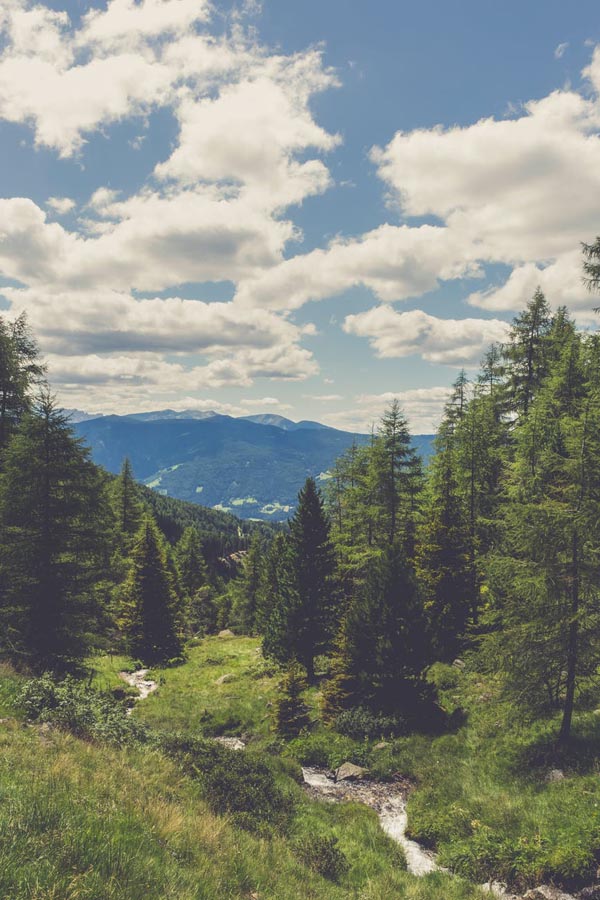
Is your conifer tree turning brown? That’s too bad. Don’t worry, there is still something you can do about it.
Let’s look at how to revive a dying conifer.
How To Revive A Dying Conifer
Your first step to revive a dying conifer should be to remove dead branches, or any branches with brown needles or leaves. You then may need to treat the tree with a fungicide or herbicide to stop the disease from spreading. After this deep water the conifer to help it recover. Applying a layer of mulch can protect against cold in the winter too.
What You Need to Know About Conifers
Conifer is an umbrella term for all cone-bearing seed plants. That’s actually how it got its name since the term comes from the latin words conus, meaning cone, and ferre, which means to bear.
Conifers are mostly trees, although there are also some species of shrubs in the group.
Here are some examples of conifers:
- Cedars
- Cypresses
- Douglas-firs
- Firs
- Hemlocks
- Junipers
- Kauris
- Larches
- Pines
- Redwoods
- Spruces
- Yews
They are important!
Trees are important. Conifers also have ecological importance especially in large areas. They adapt really well during winter.
The population of conifers is the largest carbon sink in the world.
Conifers are also used for softwood lumber and the production of paper.
There’s more…
Needles from pine trees can actually be made into a tea, not just an ordinary tea, a medicinal one. It can help treat scurvy. Pine tree needles are rich in vitamin C.
They also have delicious fruits.
Conifers are also known to be clean trees that have the ability to disinfect the surrounding area. They can reduce airborne bacteria, resulting in much cleaner air.
Mostly
You see conifer forests thriving on their own. Some of them are cultivated in parks because they are really tall and would provide good shade.
They are also mostly low maintenance and they can survive harsh winters.
You can also grow them at home if you want to have dependable shade.
Here’s what to expect:
There are at least three types of conifers based on their growth rate.
- Fast-growing conifers grow at least two feet per year.
- Moderate-growing conifers grow a maximum of two feet per year.
- Slow-growing conifers grow less than a foot a year.
You also can’t expect that kind of growth to carry on. When the tree reaches its maximum potential, it slows down its growth or it stops growing altogether.
Look
There are different species of conifers and different cultivars, too. Each kind will have different growth factors.
It’s very hard to determine the average growth of conifer trees. You could see a pine tree that is just five feet tall, but you could also see another that could grow as much as 200 feet.
Although, generally, they grow way more than just five feet–maybe 15 to 50 feet for those cultivated at home.
Of course
Those you see in the forests are way taller.

This is actually an apt time to talk about conifers considering balsam firs and Fraser firs are popularly used as Christmas trees during the upcoming holiday season.
Next:
If you have conifers at home, then you’re in luck. You will be sure to have fresh air and pine-scented breeze.
You’re going to have a nice shaded area, too.
However, you might be met with a time when your conifer is turning brown. Let’s take a look at why that could be happening, and how to revive brown conifers.
Reasons Conifers May Start Turning Brown
There are many reasons to have conifers at home. We’ve already mentioned some like the shade and the fresh scent it produces. More importantly, it can help clean the air around you.
Conifers also add beauty to your home or yard. Whatever type of conifer you choose, you are sure to add a beautiful shade of green at home.
What happens when they start turning brown?
Then you have a problem. You don’t ever want to look at a brown tree.
So, let’s look at the possible reasons why your conifers are turning brown.
Winter drying
We mentioned that conifers could survive harsh winters. But we were mostly referring to conifers in forests. They have been acclimated to the area and could survive the locality’s weather conditions no matter how harsh they turn out to be.
It’s different for cultivated conifers.
Here’s the deal:
During winter, the conifer will most likely experience dehydration due to the loss of moisture. As such, the needles turn brown.

This is actually quite normal. When winter turns to spring, the needles or leaves will start turning bright green again.
However
If the browning has reached the branch, you have to cut off the branch. This doesn’t mean that the tree is dead though.
If you haven’t planted your conifer, one way to prevent a tree from dying from winter is to make sure you are planting one that is a native of your area.
Over-pruning
We know that pruning could really help the growth of trees. However, if you see your conifer starting to go brown and it’s not even winter, then it must be due to over-pruning.
Pruning at the wrong time could cause your conifer to turn brown.
Take a look at this
When it’s extremely hot out, your conifer will be quite stressed due to the lack of water and moisture. If you prune them when they are a bit agitated, then the needles or leaves could turn brown.
The same could happen at the height of autumn.
Disease
Another possibility is that the tree could be suffering from a disease. This could be caused by bacteria, fungi, or virus.
Infestation
The browning could also be caused by insects or pests that have infested your conifer or conifers.
Don’t worry
There are ways to revive browning conifers. You have to act quickly though. Dying conifers can still be saved, but dead ones stay dead.
How to Revive Brown Conifers
It takes years for a conifer to reach the height that you truly want. So, if it starts browning, that could be worrying.
You invested a lot of time and energy growing a conifer and you wouldn’t want that to be put to waste.
Good news:
You don’t have to. There are a number of ways to revive a dying conifer:
1. Know what’s going on
You have to get to the bottom of things. You have to know why your conifer is turning brown so you could apply the best revival technique.
If you don’t know the root of it, then you wouldn’t know how to treat it.

2. Remove dead branches
Browning is the main symptom that your conifer is stressed. Although, there are many reasons why your conifer could be stressed.
But whatever reason it is, it truly helps when you remove the dead branches or the branch with brown needles or leaves.
After that
You have to do more based on the reason the conifer is dying.
3. Apply treatment
If your conifer is dying because of a disease, then you need to apply treatment. You don’t want the browning to spread to the other parts of the tree.
Let’s be more specific
If your conifer is browning due to a fungal disease, then you have to remove the dead branch and then spray or apply a fungicide or herbicide or any other treatment on the tree to prevent the disease from spreading.
Here are some common diseases affecting conifers:
Needle cast
This would make the needles turn yellow before they turn brown and fall off. Remove the yellow or brown needles and then apply treatment all over the tree.
Spruce needle rust
This will only affect spruces, hence, the name. This disease will make branches turn yellow and needles would have bright orange or white spots.
You need to prune off affected branches and then apply fungicide or herbicide all over the tree.
Another thing:
Treatment should also be applied if your conifers have been infested with insects. Just like with the disease, you need to remove the affected needles or branches and apply insecticides all over the tree.
Here are some of the most common insects that would prey on conifers:
- Cyprus aphids
- Pine mountain beetles
- Pine needle scale
- Spruce spider mites
4. Deep watering
After you have removed the branches and after applying treatment, if necessary, the conifer will surely be stressed further.
You need to do some deep watering to help them recover. You can do it just once a week.
Also
This is how you revive a dying conifer due to drought and winter injury. Do if after removing the dead branches.
It is considered deep watering because water should penetrate 12 to 15 inches into the roots.
5. Mulching
This is a good way to prevent a conifer from dying due to winter or drought. You should add around six inches of mulch to keep moisture and to prevent the roots from freezing.
6. Monitor the conifers
Recovering trees need to be well taken care of. Keep a close watch in case there is re-infection of the disease and re-infestation of insects.
When conifers are recovering, they are still quite vulnerable.
Summary
There are so many advantages to growing conifers at home. You could have shade and a natural disinfectant as conifers are good at reducing bacteria in the air.
Conifers are also just beautiful with their huge structure and bright green color. However, that would no longer be the case when they start browning. Also, browning could mean a deeper problem like disease or insect infestation.
As long as you know what the problem is, you can surely prevent the conifer from dying. How to revive a dying conifer? The first thing you need is to figure out the cause so you know how to revive your brown conifer.
Useful Resources
- What Is a Conifer Tree? – American Conifer Society
- Simple Filters Made from Conifer Trees Have a Huge Impact on the Clean Water Crisis – Popular Science
- Parasites or Insects that Infest Conifers – SFGATE

